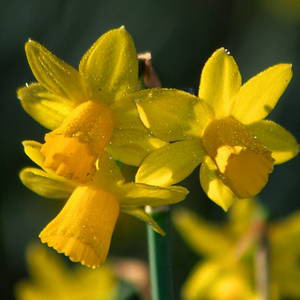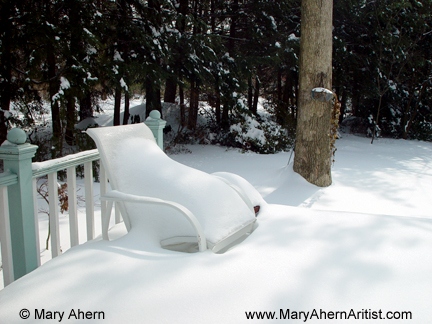The question was posed as to why some Hellebore’s can be entered into Flower Show judging and others are rejected. Here’s the long answer.
Understanding the botany of the Hellebore will help explain the answer to the Flower Show suitability.
The attraction and colors of the Hellebore, Figure #1, are not supplied by petals but rather sepals. Petals are usually lost after a flower is fertilized but sepals and bracts don’t suffer the same fate and are persistent
Sepals (A) normally form outside of petals as a protection and support of the bud and flower. There are usually 5 sepals, two outer, two inner and one both. A group of sepals is called a calyx.
The stamens (B) are the male part of the flower and are made up of 2 parts, the long white filament and the anther that sits on top holding the pollen. There can be up to 150 stamens per flower.
The stamens surround the female part of the flower, the carpel (C). Fertilization of the carpels can be by insects, bees or wind.
Replacing the petal in the case of Hellebores are small nectaries (D) that sit at the base of the sepals and provide food for pollinators. They don’t last very long and are shed at the same time as the stamens when the carpels swell with what will become seeds.
Fertilized Hellebores can seem attractive for quite a long time since the sepals are persistent and the swollen carpels (E) are distinctive. The sepals will tend to loose their color vibrancy over time however.
Because the Hellebore in Figure #2 is a fertilized flower, even though the sepals still appear fresh, this is not the stage when it is an acceptable specimen in a formal Flower Show submission.
So, the short answer to the question of whether the Hellebore in Figure #2 is acceptable for Flower Show judging is: No, since the center is a fertilized seed pod.















 Daffodils are classified using two parts of the flower. For the purpose of this description, the daffodil is divided into two regions, the perianth (petals) and corona (cup).
Daffodils are classified using two parts of the flower. For the purpose of this description, the daffodil is divided into two regions, the perianth (petals) and corona (cup). Division 1 – Trumpet
Division 1 – Trumpet Division 2 – Large Cup
Division 2 – Large Cup Division 3 – Short Cup
Division 3 – Short Cup Division 4 – Double
Division 4 – Double Division 5 – Triandrus
Division 5 – Triandrus Division 6 – Cyclamineus
Division 6 – Cyclamineus Division 7 – Jonquilla
Division 7 – Jonquilla Division 8 – Tazetta
Division 8 – Tazetta Division 9 – Poeticus
Division 9 – Poeticus Division 10 – Bulbocodium Hybrids
Division 10 – Bulbocodium Hybrids Division 11 – Split Corona
Division 11 – Split Corona Division 12 – Other Cultivars
Division 12 – Other Cultivars Division 13 – Species All species and reputedly wild forms.
Division 13 – Species All species and reputedly wild forms.


















